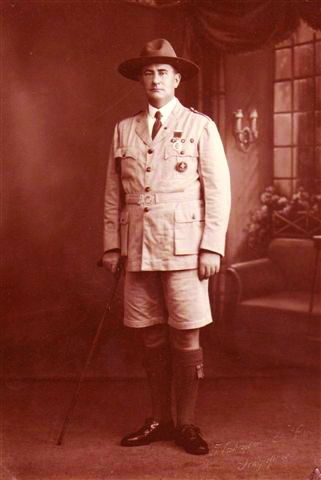Edwin Arthur Brown’s Musical Contributions to Singapore
Sheds light on Edwin Arthur Brown’s significant contributions to amateur theatricals and musical scenes in Singapore in the first half of the 20th century. He was also a long-time municipal commissioner and a member of the Singapore Volunteer Corps.
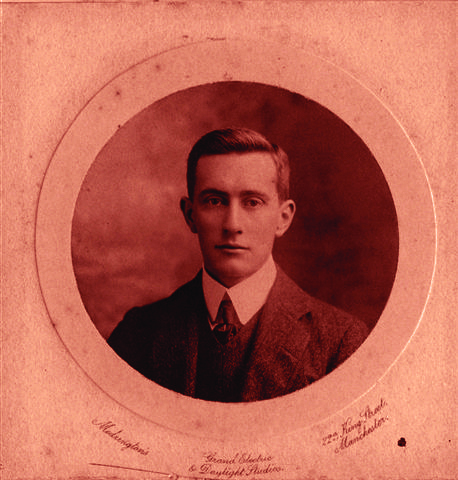
Several months ago, an overseas patron emailed Reference Point (RP), the National Library’s enquiry service, to inquire about her grandfather, Edwin Arthur Brown. Brown was a British entrepreneur, an influential member of the Singapore Volunteer Corps, and a vital musical activist who arrived in Singapore at the turn of the 20th century. Coincidentally, the National Archives of Singapore (NAS) had used RP to post the same enquiry. We found out later, through our research, that he was a Municipal Commissioner for Singapore for more than ten years since 1924. He was not only in a position to improve the civic affairs of Singaporeans at that time; he took advantage of his position to accelerate the musical development in Singapore. This he did with gusto. With the provision of some dates and facts from the patron, a search was conducted to shed more light on Brown’s significant contributions to amateur theatricals and musical scenes in Singapore in the first half of the 20th century.
Sources
Unlike the National Library, the NAS has birth and death records and other national records. However, Lee Kong Chian Reference Library (LKCRL) has its own treasure trove in Singapore’s rare collection. This complements the collection that the NAS has. A preliminary search was conducted before looking through microfilm reels of The Straits Times. This preliminary search constituted browsing through government and trade directories in the early 20th century as well as biographies of Brown’s contemporaries to garner more information about him. Autobiographical accounts from contemporaries are useful as they confirmed that events took place and the given person was a participant in the event. Depending on the scope of an enquiry, the verification of dates and data is a necessary move before scanning through newspapers in the microfilm collection. This would take several hours of investigation.
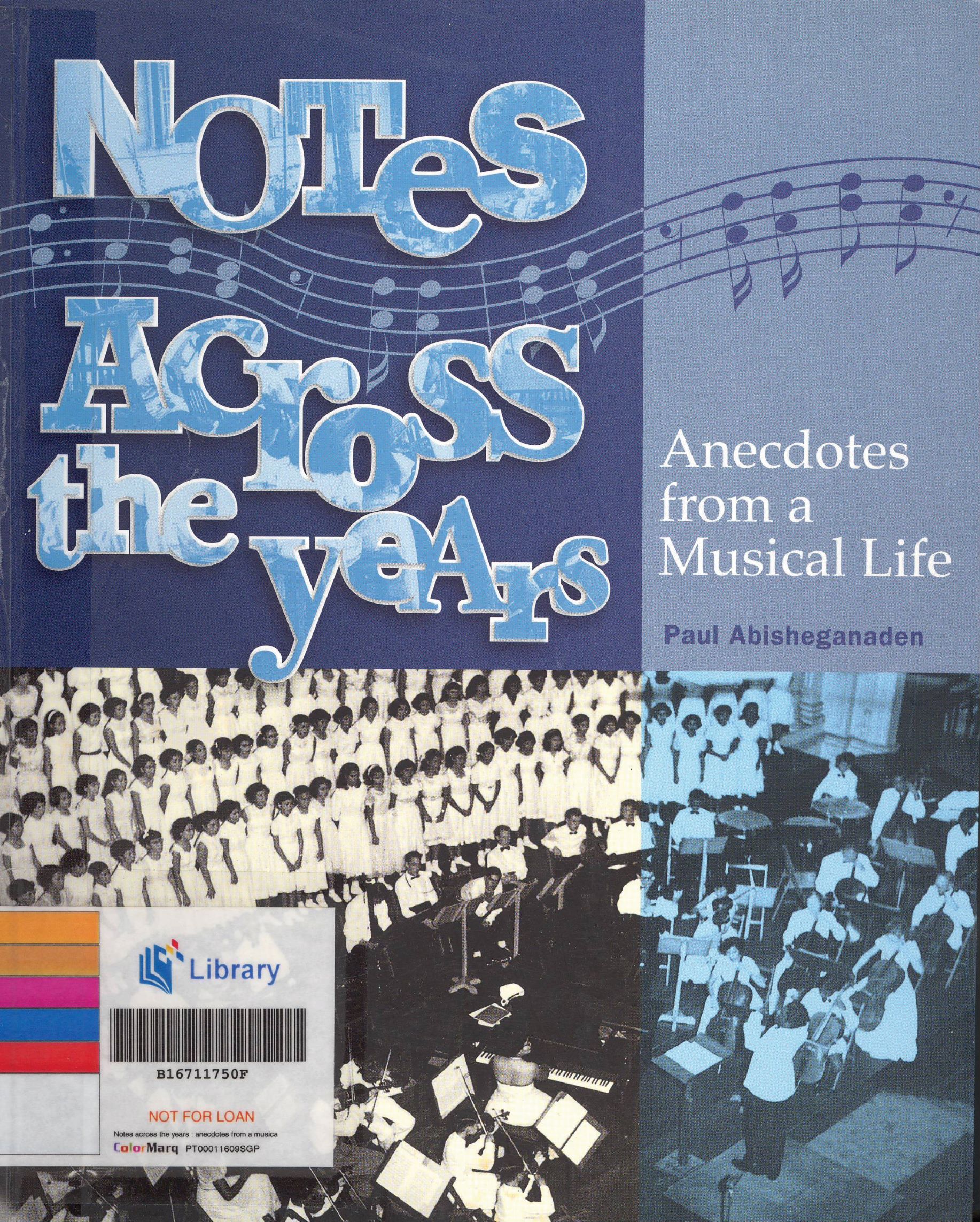
Directories formed the backbone of the search and are thus indispensable to queries dating in the early period. One such directory is the Malayan Directory of Commerce, Retailers & Residents (1936). Some of the more informative and revealing accounts regarding E.A Brown are biographies such as I Will Sing To The End, written by Ian Macleod and Notes Across The Years: Anecdotes from a musical life by Paul Abisheganaden. Ian’s father, Major Donald G Macleod was E.A Brown’s business partner during the rubber boom of 1918 onwards. They were also committed to Singapore’s defence as volunteers for the Singapore Volunteer Corps and were actively involved in the St Andrew’s Cathedral musical activities. Paul Abisheganaden, on the other hand, is Singapore’s musical brilliance, and was a student of E.A Brown in the earlier period of his life. He remembers Brown’s significant contributions to choral music in the society.
Another important source is E.A Brown’s own memoir of his early days in Singapore from 1901–1904. Indiscreet Memories was published in 1935 but was recently reprinted by Monsoon Books in 2007. Another invaluable source is A History of the Singapore Volunteer Corps 1854–1937 by T.M. Winsley which imparts a historical outline of volunteering in Malaya. In addition, Walter Makepeace, Gilbert E. Brooke and Roland St. J. Braddell’s edition of One Hundred Years of Singapore has a chapter in its second volume entitled “Amateur Theatricals and Music” devoted to explain the growth and development of theatre and music in the late 19th century and early 20th century. This chapter is made more poignant by an article written by E.A Brown himself on the music component. His self-effacing write-up provides the backdrop to the organised musical efforts in Singapore. His article attributes Singapore’s early musical scene to Edward Salzmann’s efforts. Notwithstanding recognition of his contributions in these sources, coverage of Brown’s voluntary genius to early Singapore’s political and musical developments in The Straits Times figured more prominently as he was a favourite with the press.
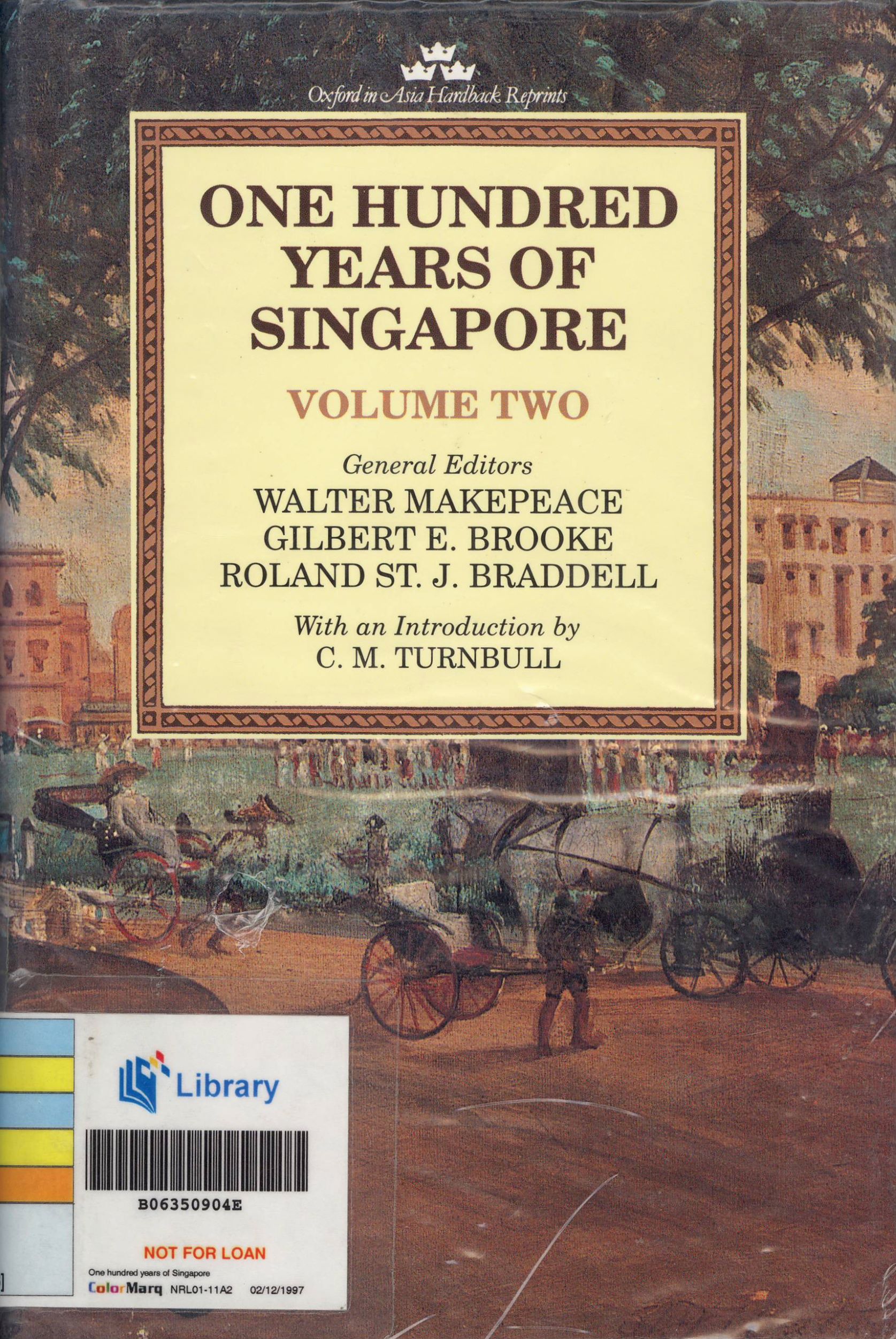
The Man and His Contributions
When E.A Brown arrived in Singapore in January 1901 from Manchester, he was only 23 years old. He was employed by a German firm called Brinksmann, a subsidiary of Hiltermann Brothers of Manchester. It was not until 1918 that he left Brinksmann to become a Senior Partner in the E. A. Brown Co., Exchange and Brokers with Donald G. Macleod and another partner. The firm was located at D’Almeida Street. E.A Brown was an entrepreneurial man and was first and foremost committed to his enterprise despite his contributions to the political and social spheres of early Singapore’s development. Once, he had to excuse himself from a Municipal meeting because he had to attend an urgent matter at work. This was reported in The Straits Times in their regular coverage of the meetings.
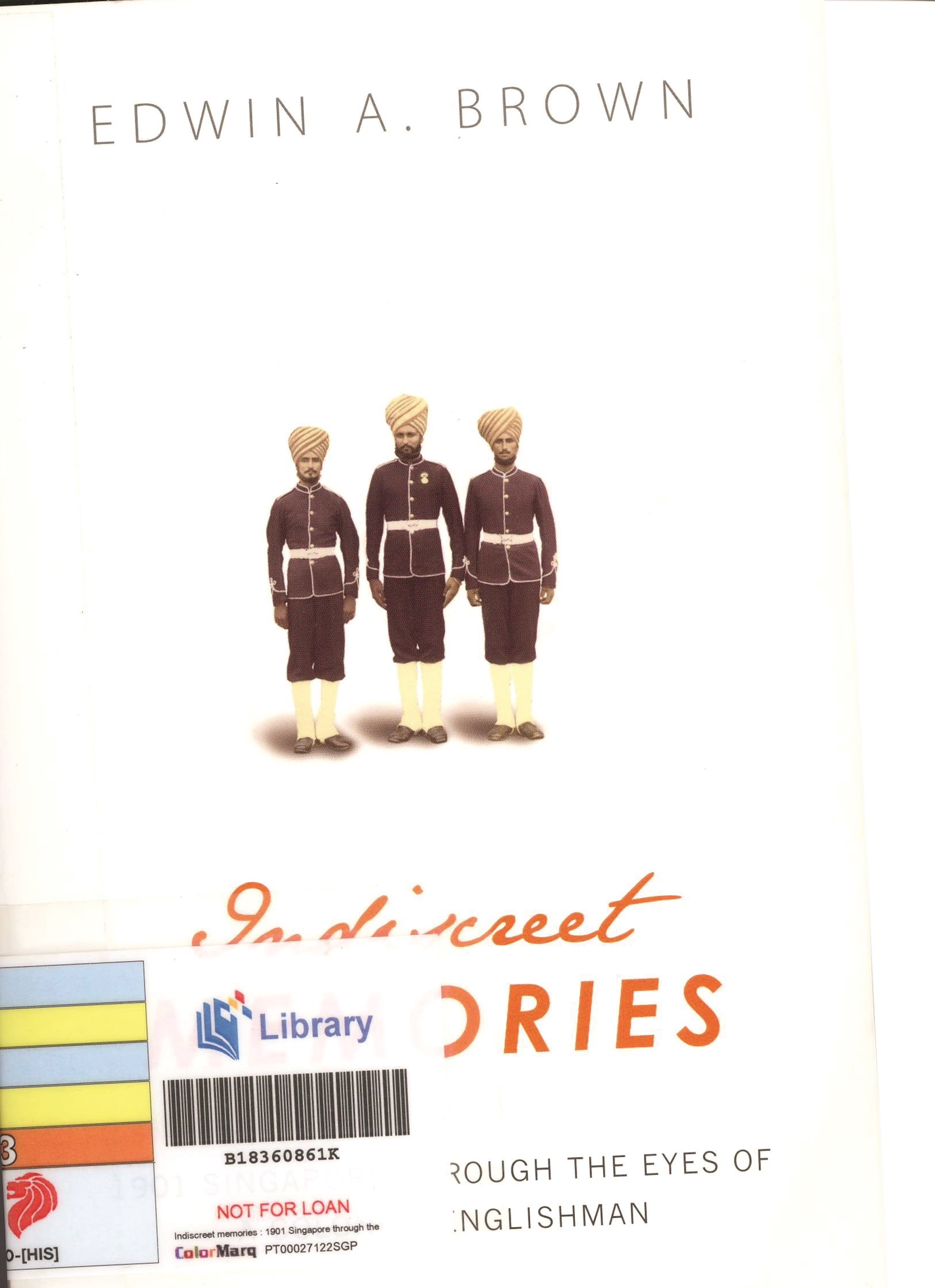
In Indiscreet Memories Brown sounded determined and resolute that he would make the most out of his stay in Singapore. This he did. In the same year that he arrived in Singapore, he joined the Singapore Volunteer Rifles. He was promoted Captain in 1913. During the Singapore Mutiny of 1915 he was called to action as part of the 5th Light Infantry to put out the mutiny. Colonel Brownlow, R.A, mentioned him specifically in his report of the affair. (A copy of Brown’s handwritten manuscript of his involvement in the Singapore Mutiny is with the Imperial War Museum in London. The original is with his granddaughter, Cecilia.) As acting Commandant, he handed over the Old Corps to the New Corps. Subsequently, he received a Long Service Medal in 1920 for his 20 years of service to the force. In January 1922, he was commissioned as Second Lieutenant and retired as Major in 1923. He was subsequently decorated with the Colonial Officers’ Long Service Decoration. On the night of Thursday, 22 September 1933, Sir Cecil Clementi, the Governor, presented an insignia of “Officer of the Most Excellent Order of the British Empire (Civil Division)” to Major Brown. Aw Boon Haw was given a Certificate of Honour at the same investiture.
Like his contributions to the defence of early Singapore, E.A Brown participated musically in the Singapore Philharmonic Society in 1901. As a bachelor, he was immediately inducted to the early life in Singapore as he was introduced to early well-known British personalities such as Charles Buckley, Walter Makepeace etc. in their homes and in church, in addition to several homes of Tuan Besars. He was an active worshipper at St Andrew’s Cathedral. On 26 November 1901 Brown made his singing debut and, more than half a year later, his first Sullivan Opera on 20 June 1902. His debut at Sullivan Memorial Concert was to commemorate the late Sir Arthur Sullivan who had died on 22 November 1900. The press reported, “Mr Brown followed with ‘Thou’rt Passing Hence’, which was sung in Mr Brown’s best style and was very warmly received”. Brown described himself somewhat self-effacingly in Makepeace’s 100 years of Singapore, “Mr Brown’s arrival in 1901 gave the Colony a baritone to fill the vacancy caused by Robert Dunman’s retirement”.
Brown’s musical involvement was considered inevitable as he used to sing on a semi-professional basis in Manchester, two years before he left for Singapore. He also came from a musically talented family. It helped that the British community in Singapore was also musically inclined, leading to the development of the musical and theatrical scene in Singapore. His involvement in the Singapore Philharmonic Society since 1901 led to other things.
Mr Brown made his debut in the part of Arthur, and received a cordial welcome from the Press; since then Singapore theatricals have owed an immense debt of gratitude to him as actor, singer, stage-manager, and above all, a voice trainer in musical productions.
Soon after, the Singapore Amateur Dramatic Committee was formed in March 1906. Brown played a pivotal role with other original members such as Mr E.F.H Edlin of Drew and Napier and F.A Langley of Guthrie and Co. He was a producer and stage manager for most of the productions that the committee produced. During this time, his stage management skills were recognised due to the triumphant production of The Pirates of Penzance in February 1909. The official opening of the new theatre marked this event. As for performance, Mr. Brown was at his best performing the role of Hayden Coffin and Lieutenant Reginald Fairfax in The Geisha in October and November 1912. He acted opposite his female co-stars such as Ida Van Cuylenburg as O Mimosa San and Mrs Roland Braddell as Molly Seamore. This proved to be the finest and most finished production ever done by amateurs in Singapore. Brown was instantly remembered for singing “Star of my Soul”. This was incidentally the play that he stage-managed and produced. Brown made rave reviews for the singing of “They’d Never Believe Me” in December 1915 for a revue called My Word!, written by Mrs Roland Braddell and Francis Graham. In December 1917, Brown stage-managed the Pinero’s Dandy Dick. It was seen as another success on Brown’s part as it was the best production of a non-musical play that the Committee ever did.
In the meantime, the Singapore Philharmonic Society became defunct in 1930 when Major St. Clair passed away. Children’s concerts were inaugurated by the late Major and were carried on by Mr H.C.W Allen for some years after the late Major’s passing. But as there was a lack of musical talent, an absence of an appropriate hall to hold concerts and rehearsals and an organ, the society ceased to exist. Brown came to the rescue. Brown had been a municipal commissioner in Singapore since 1924. He fought for the construction of a public concert hall in the face of bitter opposition. The Victoria Memorial Hall was built on a government-sponsored site in Penang Lane, and Brown was largely credited for the subscriptions for the building. He was also mostly responsible for persuading the rest of his fellow Municipal Commissioners to install an organ in the Hall. It was named the “St. Clair” organ. When His Excellency, the Governor of the Straits Settlements, Sir Cecil Clementi opened this organ on 17 September 1931, a three-day musical festival was held. The first item on the programme was Sullivan’s “In Memoriam” Overture as everyone stood silent to remember the late Major St. Clair. There were other items such as Parry’s “Blest Pair of Sirens” and “Banner St. George”, in which 40 orchestra and 150 choir members were present.
Due to such immense success, the Singapore Musical Society in 1931 took over the work and assets of the old Philharmonic Society. In this new Singapore Musical Society, Brown was the choral conductor whereas J. Tryner was the orchestral conductor. Several choral and orchestral concerts were performed in the 1930s onwards. For its first concert in January 1932, it decided to give 20% of its proceeds to the unemployed despite the society’s young and financially unstable position.
Children’s concerts were becoming more regular with much variety in their programmes. Brown’s endeavours were fruitful in many respects as the organ came in handy. He became known for being the organiser and trainer for public community singing for more than 20 years. It was also only fitting that Brown was to be one of the main geniuses for children’s concerts. For the arrival of His Royal Highness, the Prince of Wales to Singapore on 31 March 1922, E.A Brown was appointed as the organising talent of the Children’s Corner. This was a welcome presentation to the Prince by children of all nationalities of the Colony. It was estimated that approximately 10,000 children were present together with several teachers and 12 troops of Boy Scouts counting to 700. The children were brought in from all parts of the city and suburbs, and no less than 27 trams and 130 motor lorries were used to ferry them to the area from where they marched to the Corner. Such an assemblage of children was never witnessed before in the history of Singapore. After the Prince inspected the Boy Scouts and Girl Guides, the children, accompanied by the band, sang the first verse of “God Bless the Prince of Wales”. The Press reported,
As already stated, praise must in the first instance be accorded to Mr E.A Brown who not only organised the great show but so ably conducted the concerted singing from the Rostrum in the centre of the Corner.
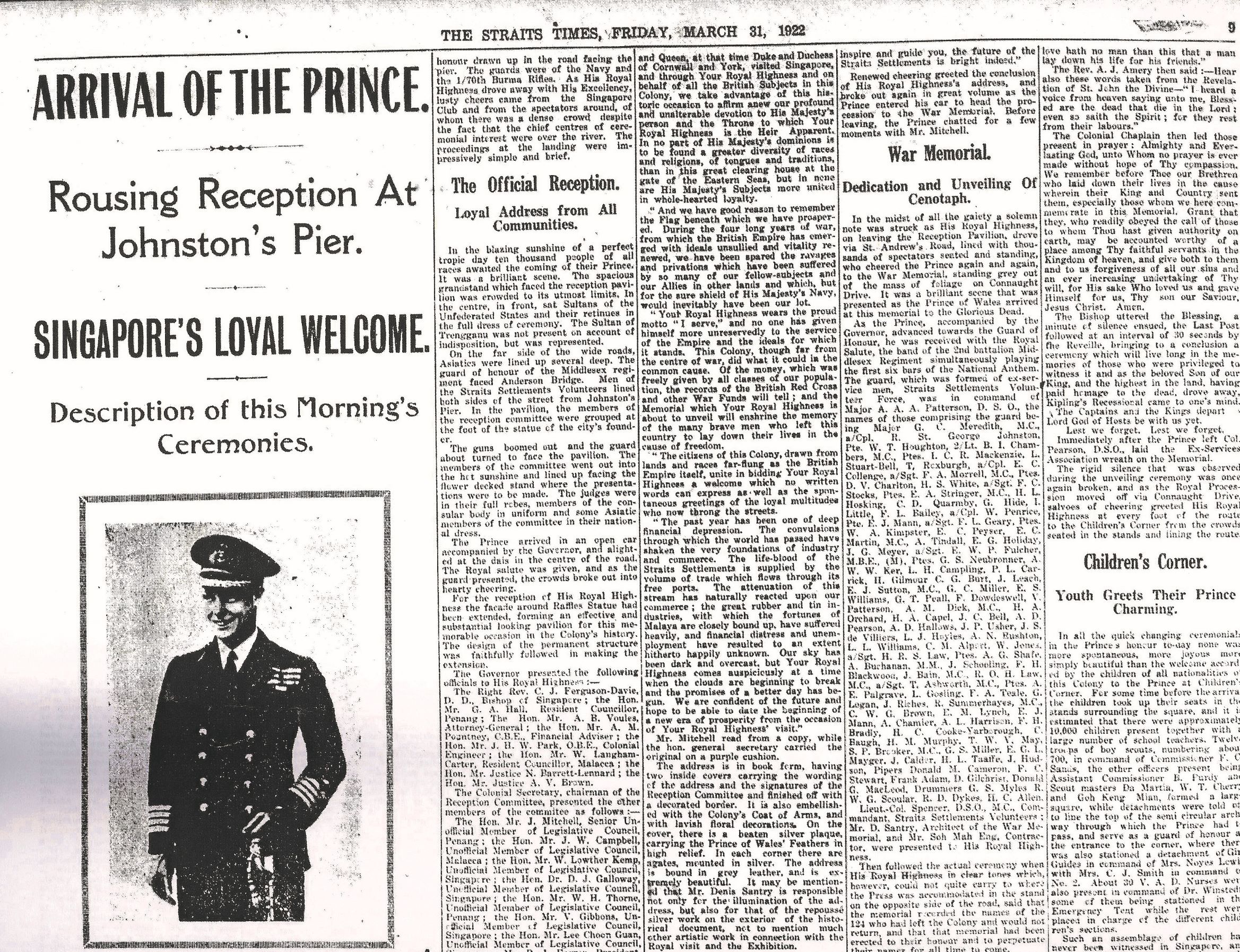
This is in addition to his other musical commitment such as being the honorary Choirmaster in St Andrew’s Cathedral for 32 years. He also established the Children’s Orchestra in 1923, perhaps due to the success of the occasion of the arrival of the Prince of Wales. Brown continued to direct the musical activities of the Musical Society until he retired from his activities as a stockbroker.
Conclusion
In 1941, when World War II broke out, people were evacuating to leave Singapore. E.A Brown refused to leave Singapore with his wife, Mary and daughter, Shelagh. He was subsequently interned in Changi Prison. When he was released, he found out that Mary had died in 1945. He left for the United Kingdom and died there in 1955. Until his death, he continued to be involved with music, setting up a very successful choir in Strabane, Co Tyrone, which survived for decades after his death.
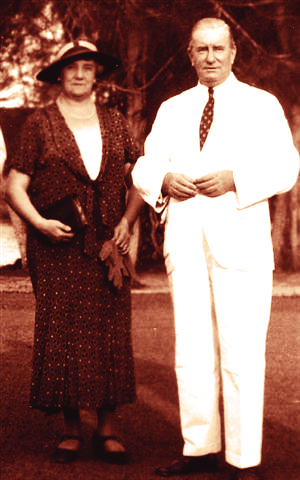
In early April, his granddaughter Margaret Caldicott was at the National Library to give a talk on E.A Brown at a more personal level. The Local History Service under the Singapore Information Services (SIRS) provided Ms Caldicott with the research service.
REFERENCES
BOOKS
Edwin A. Brown, Indiscreet Memories: 1901 Singapore Through the Eyes of a Colonial Englishman (Singapore: Monsoon Books, 2007. (Call no. RSING 959.5703 BRO-[HIS])
Kevin Tan, Scouting in Singapore 1910–2000 (Singapore Scout Association: National Archivers of Singapore, 2002). (Call no. RSING q369.43095957 TAN)
Malayan Directory of Commerce, Retailers & Residents (Singapore: W. L. Collins for the Advertising & Publicity Bureau, 1936), 9, 24. (Call no. RRARE 382.09595 MAL; microfilm no. NL3648)
Paul Abishegenaden, Notes Across the Years: Anecdotes From a Musical Life (Singapore: Unipress, 2005). (Call no. RSING 784.2092 ABI)
T. M. Winsley, A History of the Singapore Volunteer Corps 1854–1937 (Singapore: Govt.f Print. Off., 1938). (Call no. RCLOS 355.23 WIN)
Walter Makepeace, Gilbert E. Brooke and Roland St. J. Braddell, One Hundred Years of Singapore, vol. 2. (Singapore: Oxford University Press, 1991). (Call no. RSING 959.57 ONE-[HIS])
DATABASE
J. Tryner. “Music in Singapore,” The Musical Times 73, no. 1078 (December 1932): 1119–120. (From JSTOR via NLB’s eResources website)
NEWSPAPER ARTICLES
“A Successful Concert,” Straits Times, 14 September 1903, 1. (From NewspaperSG)
“Amateur Theatricals: Triple Bill at the Town Hall,” Straits Times, 21 March 1902, 5. (From NewspaperSG)
“Amateur Theatrical Trailers: The Triple Bill at Town Hall,” Straits Times, 22 March 1902, 5. (From NewspaperSG)
“Arrival of the Prince,” Straits Times, 31 March 1992, 9. (From NewspaperSG)
“Choral & Orchestral Concert,” Straits Times, 19 March 1902, 4. (From NewspaperSG)
“E. N.Taylor, “Heifetz vs. Brown,” Straits Times, 29 December 1931, 17. (From NewspaperSG)
E. A. Brown, “An Open Letter to Jascha Heifetz,” Straits Times, 27 December 1931, 1. (From NewspaperSG)
“For the Cadet Corps,” Straits Times, 20 June 1902, 4. (From NewspaperSG)
“Marquardt Concert Tonight,” Straits Times, 18 January 1902, 4. (From NewspaperSG)
“Musical Society,” Straits Times, 26 January 1932, 12. (From NewspaperSG)
“Page 1 Advertisements Column 4: Amateur Performance,” Straits Times, 11 June 1902, 5. (From NewspaperSG)
“Page 5 Advertisements Column 1: Amateur Performance,” Straits Times, 19 June 1902, 5. (From NewspaperSG)
“Philharmonic Concert,” Straits Times, 2 September 1901, 2. (From NewspaperSG)
“Salzmann Complimentary Concert,” Straits Times, 10 February 1902, 5. (From NewspaperSG)
“Singapore Cadet Corps,” Straits Times, 23 June 1902, 5. (From NewspaperSG)
“Singapore Cadet Corps,” Straits Times, 21 June 1902, 5. (From NewspaperSG)
“Singapore Musical Society,” Straits Times, 5 March 1932, 12. (From NewspaperSG)
“Singapore Musical Society,” Straits Times, 23 January 1932, 12. (From NewspaperSG)
“Singapore Philharmonic Society,” Straits Times, 31 July 1901, 3. (From NewspaperSG)
“St Andrew’s Eve,” Straits Times, 1 December 1902, 4. (From NewspaperSG)
“‘Sullivan’s Memorial Concert’,” Straits Times, 26 November 1901, 2. (From NewspaperSG)
“Symphony Concert,” Straits Times, 20 January 1932, 12. (From NewspaperSG)
“The Cadet Corps Benefit,” Straits Times, 11 June 1902, 5. (From NewspaperSG)
“The King’s Birthday,” Straits Times, 12 November 1902, 5. (From NewspaperSG)
“The Marquadt Concert,” Straits Times, 17 January 1902, 5. (From NewspaperSG)
“The Marquadt Concert,” Straits Times, 17 February 1902, 4. (From NewspaperSG)


